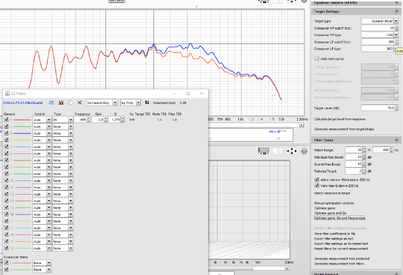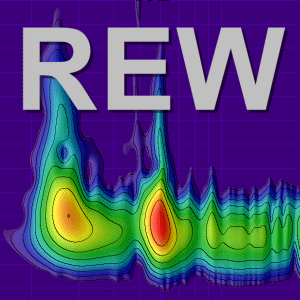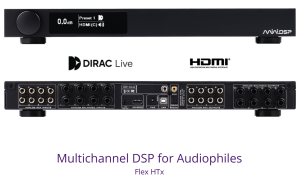wus
Member
Thread Starter
- Joined
- Dec 23, 2020
- Posts
- 57
More
- Preamp, Processor or Receiver
- Windows 10 PC
- Computer Audio
- 1: ESI Maya22USB and an iSEMcon EMX-7150 microphone for measurements; 2: LogiLink UA0099 USB Sound Card for music output;
- Front Speakers
- 2 x JBL 305P MkII
I'm using REW 5.20.13 to measure the in-room frequeny responses of a woofer, at 9 different listening positions in the room. To get a base for REW's EQ to work off, I then first SPL-aligned the 9 curves (as recommended in the manual) and then db averaged it with REW's controls. Next I used the resulting average FR to let REW calculate EQ settings to smooth the FR, in the range from 30 to 600 Hz. I transferred the shown EQsettings (8 bell filters with center frequencies from about 80 to 500 Hz, different Q values and attenuation or amplification factors) to my DSP, made 9 new measurements at the same 9 listening positions as before and averaged them again. But the resulting FR curve looks considerably worse. The blue curve was without EQ, orange with EQ:

Where is the mistake? Can anybody help me, please?
Where is the mistake? Can anybody help me, please?










 Until your "reminder" I thought house curve = room curve.
Until your "reminder" I thought house curve = room curve. ) flat target the EQ gives me many filters, more than my DSP accepts per (output) channel. I had to reduce the target flatness to 3dB to get the number down to 8 which I can enter into the DSP.
) flat target the EQ gives me many filters, more than my DSP accepts per (output) channel. I had to reduce the target flatness to 3dB to get the number down to 8 which I can enter into the DSP.





